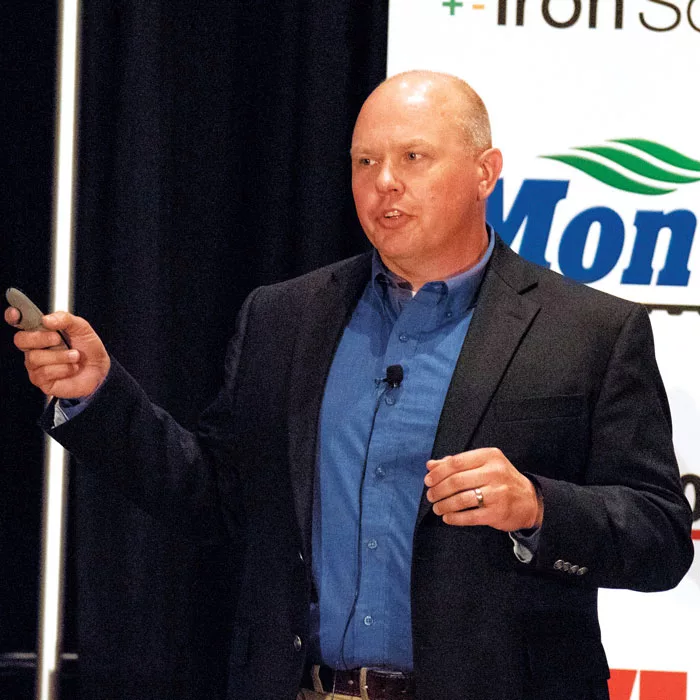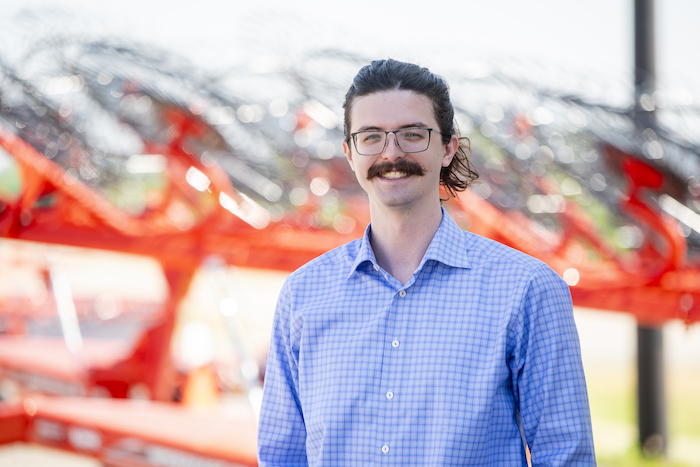One of the more unique dealer mergers in recent memory was finalized at the end of 2022. Parallel Ag was formed in December 2022 through the merging of shortline Midwest applicator dealer Ag Solutions Group and AGCO Southern Plains dealer Livingston Machinery. The end result was a 12-store dealership with locations in Oklahoma, Missouri, Texas, Iowa, Kansas and Minnesota, a wealth of equipment lines and a new workplace culture that needed creating.
Parallel Ag President and CEO Shawn Skaggs discusses how the merger came to be, what benefits it brings and how they will handle the 2 former dealerships’ product offerings and markets.
Can you give a quick summary of what led up to this merger?
Livingston Machinery Co. was an ESOP company from 2009 until 2021, when it was sold to me and 2 private equity groups. One of those private equity groups, Summit Equity, also owned Ag Solutions Group, a group of shortline dealerships throughout the Midwest. Summit brought that to the table in the deal. The thought all along was eventually we would roll all this together to become one big platform. At that time, we formed a holding company — Ag Solutions Group Holdings — that owned Ag Solutions Group LLC and Livingston Machinery Co. LLC separately. We operated that way for a little over a year.
We’re primarily competing with a lot of large Deere dealerships in our areas, with an average size in the neighborhood of 27 stores. We want to be able to compete for employees and offer the same kind of benefits and services to our customers that those dealerships can offer and do it in an efficient manner. We could offer a lot of those same benefits, but when you are able to spread the cost of that over 27 stores, it’s a whole lot easier than when you have 4-5 stores. Long term, we knew we wanted to roll the 2 organizations together to give us more scale and to be able to build that platform and continue to add locations in the future.
How did you go about merging the 2 dealership’s employee cultures?
It’s definitely still ongoing. You can’t build a culture overnight, and you don’t build culture with a couple meetings. You build a culture over years of people working together and having shared values and a shared vision for where they want to go. We knew we had to create that shared vision for where we wanted to go.
Dealer Takeaways
- Look for opportunities in your area to acquire dealerships outside of your brand. You may find an opportunity you weren’t expecting.
- After acquiring or merging with another dealer, move equipment lines between your locations where they make sense.
- Assess whether or not your dealership’s future growth plan will involve a new ownership model: ESOP, private equity, re-branding, etc.
The best thing we did was hire an outside facilitator to come in and host a meeting for us. We’d done annual strategy sessions and annual planning meetings on the Livingston Machinery side for a couple of years, but this was the first time we brought in an outside facilitator.
Last October, we decided to do our annual planning meeting together in St. Louis. We brought the leadership teams from all of what we now call our Midwest stores, which were the Ag Solutions Group stores, and what we now call our Southern Plains stores, the former Livingston Machinery stores. We brought those leadership teams together, all the store managers from all those different locations, plus our executive teams and walked through exactly what we wanted our mission, vision and core values to be. It was the best thing we could have done.
How has your mentality as a leader changed with the merger?
I’ve got a lot of things to learn because they’re handling a lot of products in the Midwest that I’ve not spent a lot of time around. They’re handling a lot of application products that I was not as familiar with because we were focused on a totally different kind of application in the South. I spent 22 years selling hay equipment and tractors and things like that but not really focused on anhydrous applicators and some of the other tools they use in the Midwest.
“You don’t build culture with a couple meetings…”
The most important thing I had to get better at was delegation. I can’t visit all 12 stores as often as I’d like. We’re really focused on professional development right now within our company. We’re trying to help everybody become a better leader and also be better at managing their time. We’ve got to become better leaders to handle a bigger company and develop our teams. We’ve got so much expertise on different areas between the 2 regions that we need to share, but just finding the time and the people to be able to go and share those is a new challenge. It’s something that’s going to really benefit all our locations once we get that done.
What goes into bringing 2 dealerships with different market focuses together as one company?
It’s going to be an ongoing process, and we’re going to have to learn as we go on exactly how to do that because it is very different. Ag Solutions Group was very application focused, and obviously that’s very different than what we [Livingston Machinery] were doing as a mainline AGCO dealer. You don’t see it very often where you have a large shortline dealer combined with a large mainline dealer. It creates some challenges as far as branding goes and making sure we’re advertising the right things in the right places. It’s definitely stretching our marketing team and creating new challenges for them to overcome.
The main thing we’re focused on is getting the culture right and getting our people to work together. We know we’re not going to always have the same brands and products at every location, and that’s not a bad thing. It gives us diversification that we didn’t have before — not just geographically between the Midwest and the Southern Plains states, which can be very different. This last year we had a huge drought in Oklahoma, Texas and western Kansas, but it wasn’t nearly as bad in Iowa, Missouri and Minnesota. That gave us some diversification that was really good. Parts sales were much better in the Midwest than in the Southern Plains.
The product diversification is great because there’s always going to be cycles within each one of those markets for different kinds of crops and for different kinds of products. We have plans to add some more lines to the Ag Solutions Group stores, like tractors and hay equipment where it’s appropriate. At the same time, we want to take some of those application lines we’re carrying up in the Midwest and bring them down to the Southern Plains as well. It’s going to be a larger product offering for all of our stores. But it’s going to take some time because we’ve got to know what we’re doing with those before we try to launch those to customers.
AGCO is a tough one because there are some very strict lines with our contractual obligations — where we can and can’t go. There’s some other good AGCO dealers up in the Midwest in some of the same areas we are, where we’re not going to be able to get the AGCO brands. It’s just a fact, and we knew that going into it. That doesn’t mean there might not be some other opportunities later on. Right now there’s some hard lines, and we’re not going to step on anybody’s toes. It’s the same with Apache sprayers. Our intent was not to bring Apache sprayers down into the Southern Plains states because we already have the Rogator.
Do you see potential for this merging of a mainline and shortline dealership process to be applicable for other dealers?
Yes. I think it could be applied elsewhere in the industry. It depends on what the needs are and what the opportunity is. Some of the other networks — like John Deere and Case IH — are a little bit further along in their consolidation efforts than AGCO. There’s not going to be a lot of opportunities for them to grow like this. We’ve seen this with some other industries as well, where you had a lot of industrial dealers who started to get into the ag business because they had basically been capped out on their industrial business. They had very specific borders they couldn’t go outside of, and there was really no way for them to continue to grow other than to get into a different industry.
“We’ve got to become better leaders to handle a bigger company…”
While this isn’t getting into a different industry, it is getting into some different product lines. You could see that happen with some other platforms, where they start to get into some shortline businesses or possibly even other main lines. However, it’s probably a lot more likely to happen with other shortline businesses to be able to continue to grow either within that geographic footprint or in a totally different area. I’m not saying it’s the ideal model by any means, but I’m an opportunistic person. Whenever there’s an opportunity, that’s when you need to step forward.
Can you share anything about any future plans for Parallel Ag’s expansion?
We’d love to have more dealerships in and around our current geographic areas. Some of those dealers are ready to move on and do something different, and some of them aren’t. But there are people every day who call and say, “Let’s talk about this. Maybe this is something that we would look at.” There are other places we’d really like to be where they’re not ready to have those conversations yet. We’re not going out to push people, but we do want to grow long term. We feel, long term, that we need to be in that 25-30 location realm in order to be the full dealership we want to be for our customers.







